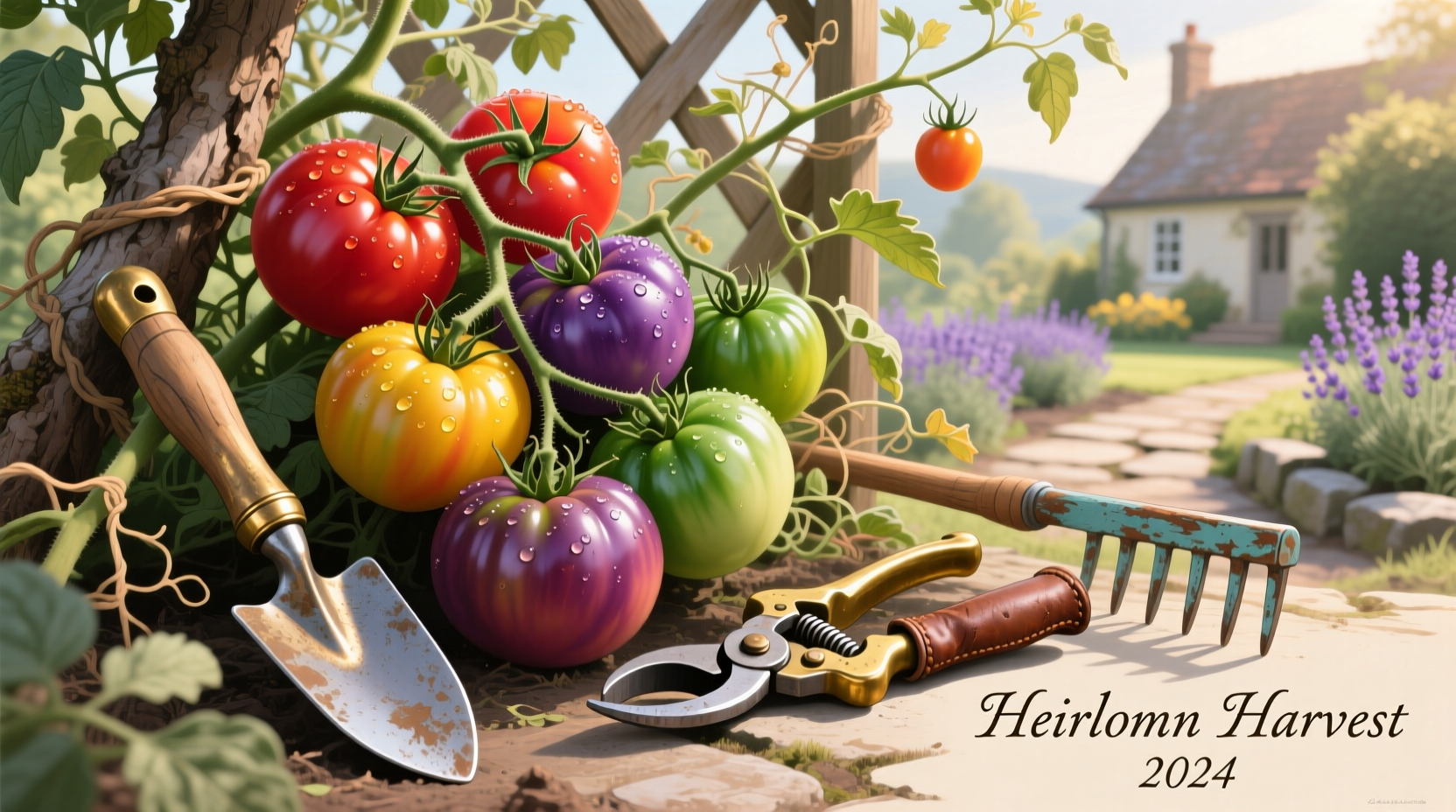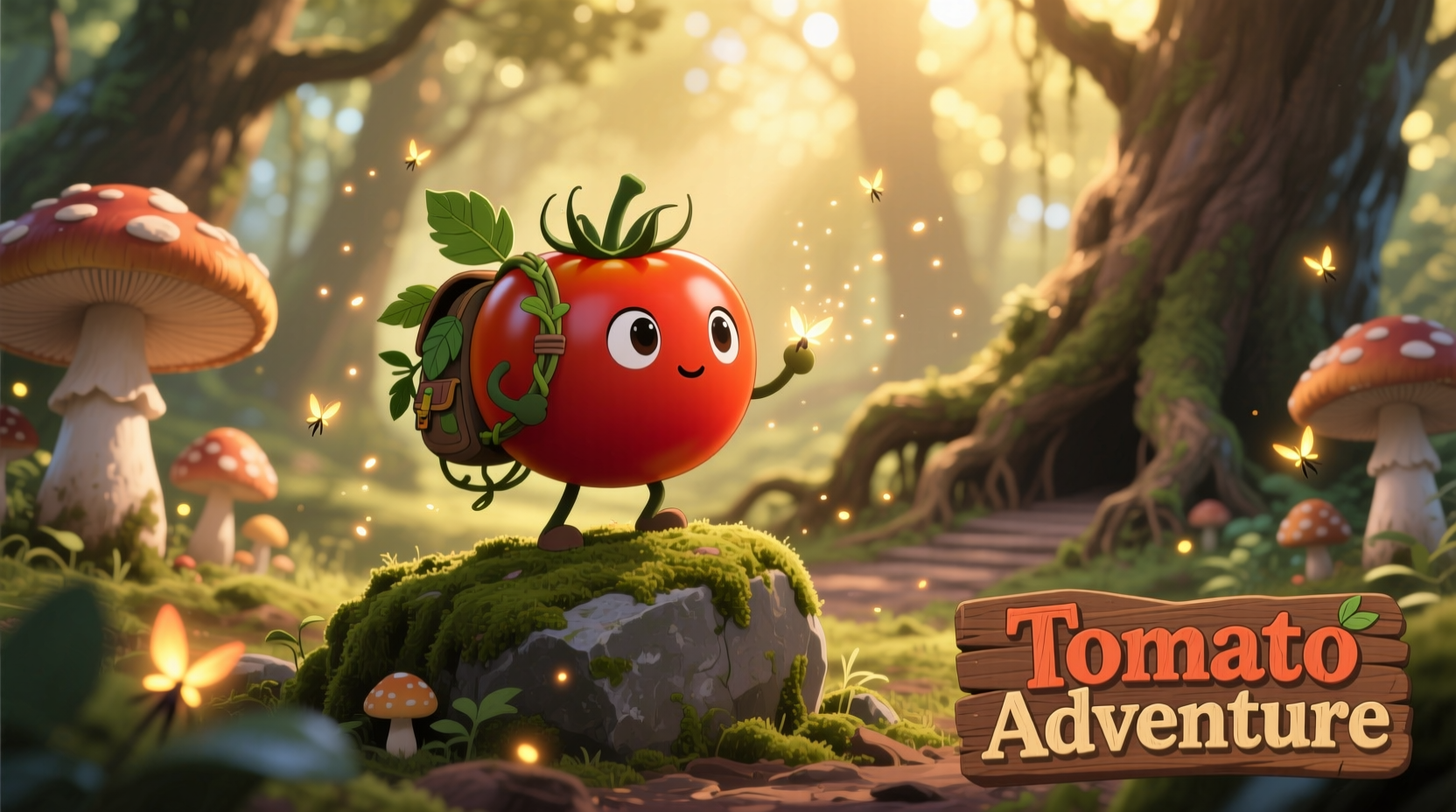Imagine biting into a Brandywine tomato still warm from the sun, its sweet-acid balance perfectly tuned by morning dew. This isn't just gardening - it's a sensory expedition through centuries of agricultural innovation. Modern tomato varieties span from the tiny golden currants of the Andes to the massive Japanese Black Truffles, each offering unique flavor compounds that change dramatically based on growing conditions and harvest timing.
Your Tomato Adventure Roadmap
Whether you're cultivating a windowsill pot or planning a backyard orchard, this guide follows your natural progression from curious beginner to confident tomato explorer. We've structured it around the actual journey you'll take - from selecting seeds to savoring your final harvest.
Understanding Tomato Diversity: Beyond Red and Round
Tomatoes aren't just red spheres - they're a spectrum of flavors, textures, and colors developed through 500 years of selective breeding. The key to a successful adventure lies in matching varieties to your specific climate and culinary goals. While grocery store tomatoes prioritize shipping durability, heirloom varieties offer complex flavor profiles that professional chefs prize.
| Tomato Type | Flavor Profile | Best Culinary Use | Days to Maturity |
|---|---|---|---|
| Cherry Tomatoes | Sweet, intense, high sugar content | Salads, roasting, snacking | 55-65 days |
| Beefsteak Varieties | Balanced sweet-acid, meaty texture | Burgers, sandwiches, grilling | 70-85 days |
| paste Tomatoes | Concentrated flavor, low moisture | Sauces, canning, sun-drying | 75-90 days |
| Heirloom Varieties | Complex, often floral or fruity notes | Caprese salads, fresh applications | 70-90 days |
Source: USDA Agricultural Research Service Tomato Database
Starting Your Adventure: Planning Phase
Your tomato journey begins with understanding your local climate's impact on flavor development. The University of California's Agricultural Extension research shows that soil temperature fluctuations of just 5°F can alter lycopene production by 15-20%, directly affecting both color and nutritional content. For beginners, we recommend starting with three complementary varieties:
- Romance Pack - Disease-resistant hybrid ideal for challenging climates
- Black Krim - Heirloom with smoky-sweet flavor perfect for cool coastal areas
- Sun Gold - Early-producing cherry tomato that thrives in containers
Track your local frost dates using the USDA Plant Hardiness Zone Map to determine optimal planting windows. Remember that tomatoes require 6-8 hours of direct sunlight and soil temperatures consistently above 60°F for successful germination.

The Growing Journey: From Seed to First Fruit
Successful tomato adventures require understanding the plant's natural growth cycle. The critical stages include:
- Germination (7-14 days): Maintain soil temperature at 70-80°F
- Vegatative Growth (3-4 weeks): Focus on root development before flowering
- Flowering (2-3 weeks): Requires consistent moisture and pollination
- Fruit Development (4-8 weeks): Temperature affects sugar-acid balance
Research from Cornell University's School of Integrative Plant Science demonstrates that allowing tomatoes to fully ripen on the vine increases lycopene content by up to 30% compared to vine-ripened store varieties. However, this requires careful monitoring of the Oregon State Extension's ripeness indicators to harvest at peak flavor.
Culinary Exploration: Transforming Harvest into Masterpieces
Your tomato adventure reaches its climax in the kitchen. Professional chefs use specific techniques to maximize flavor based on variety characteristics:
- Acid balancing: Add a pinch of baking soda to neutralize excess acidity in sauce tomatoes
- Layered roasting: Combine different varieties in roasted tomato blends for complex flavor profiles
- Temperature control: Never refrigerate ripe tomatoes - cold storage destroys volatile flavor compounds
The Flavor Matrix research from the University of California shows that pairing tomatoes with specific herbs creates synergistic flavor compounds. Basil enhances the perception of sweetness in red tomatoes, while oregano complements the earthy notes in purple varieties. For the ultimate summer adventure, try this simple technique: slice heirloom tomatoes, sprinkle with flaky sea salt, and let sit for 15 minutes before adding fresh basil - the salt draws out natural juices while enhancing umami compounds.
Documenting Your Adventure
Keep a tomato journal to track your discoveries. Note these critical elements for each variety:
- Soil amendments used and their impact on flavor
- Daily temperature fluctuations during ripening
- Harvest timing relative to color development
- Culinary applications and flavor notes
This documentation creates your personal flavor database, helping you refine future adventures. The University of Massachusetts Extension program recommends using a simple 1-5 scale for sweetness, acidity, and umami to track subtle differences between varieties.
Advanced Adventures: Taking Your Exploration Further
Once comfortable with basic varieties, consider these advanced challenges:
- Microclimate gardening: Grow different varieties in specific yard locations to compare flavor development
- Seed saving: Preserve heirloom varieties adapted to your local conditions
- Flavor pairing experiments: Test how different cooking methods affect specific varieties
Join community seed exchanges through organizations like Seed Savers Exchange to access rare varieties and connect with fellow tomato adventurers. Their annual tomato tasting events provide valuable sensory education about flavor nuances.
Common Challenges and Solutions
Every adventure has obstacles. Here's how to overcome common tomato challenges:
- Blossom end rot: Maintain consistent soil moisture and ensure adequate calcium
- Cracking: Water deeply but less frequently as fruit ripens
- Pests: Use companion planting with marigolds to deter nematodes
- Disease prevention: Rotate crops annually and use mulch to prevent soil splash
Remember that imperfect tomatoes often have superior flavor - commercial standards prioritize appearance over taste. The Flavor Genome Project at UC Davis found that tomatoes with minor cosmetic flaws frequently contain higher concentrations of flavor compounds.
Extending Your Adventure Beyond Summer
Your tomato journey doesn't end with the growing season. Preserve your harvest through:
- Sun-drying: Concentrates flavors while preserving nutrients
- Freezing whole: Maintains texture better than blanching for sauces
- Creating tomato powder: Intensifies umami for year-round use
These preservation methods allow you to continue your adventure through winter, comparing how different techniques affect flavor profiles. The National Center for Home Food Preservation provides science-based guidelines for safe preservation practices.
What's the easiest tomato variety for beginners to grow?
Sungold cherry tomatoes consistently rank as the easiest for beginners due to their disease resistance, early production, and adaptability to various growing conditions. They typically produce fruit within 57 days of planting and continue yielding until frost.
How can I improve the flavor of store-bought tomatoes?
Place unripe tomatoes stem-side down at room temperature until they reach desired ripeness. Never refrigerate tomatoes before ripening - cold temperatures permanently damage flavor compounds. For immediate use, sprinkle with flaky salt 15 minutes before serving to enhance natural sweetness.
When is the best time to harvest tomatoes for maximum flavor?
Harvest tomatoes when they've developed full color but still feel slightly firm. The optimal time is early morning when sugar content peaks. For the best flavor, allow tomatoes to ripen fully on the vine - research shows vine-ripened tomatoes contain up to 30% more lycopene than those picked green and ripened off-vine.
Can I grow tomatoes in containers successfully?
Yes, choose determinate varieties like Patio Princess or container-specific hybrids. Use pots at least 18 inches in diameter with quality potting mix. Container-grown tomatoes require more frequent watering and weekly feeding with balanced fertilizer. Place containers where they'll receive morning sun and afternoon shade in hot climates.











 浙公网安备
33010002000092号
浙公网安备
33010002000092号 浙B2-20120091-4
浙B2-20120091-4